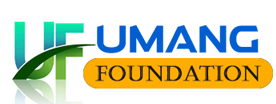
Best Nasha Mukti Kendra in Nilokheri
De-Addiction | Rehabilitation Centre
Drug Addiction | Heroin Addiction Treatment
Verified Nasha Mukti Kendra in Nilokheri - Umang Foundation
Nasha Mukti Kendra in Nilokheri have emerged as an urgent necessity as the number of addicts is growing as a first pace. There isn’t a week that goes by that we don’t hear about a new high-profile politician, singer, or actor going to a drug or alcohol treatment center. Both the number of patients and the number of Nasha Mukti Kendra in Nilokheri are rising annually.
Also, when celebrities go to rehab, they usually go to a posh facility with marble bathrooms, views of the greenary, and a spa. Nasha Mukti Kendra in Nilokheri are playing an increasingly important role in saving the lives of addicts. The entire staff of the centre is carefully selected to provide the inmates with love and care. Patients’ requirements are taken into consideration. Whether on a mental, physical, social, or spiritual level
What Does Nasha Mukti Kendra in Nilokheri mean?
It is a set of interventions that interact with an individual’s environment to improve functioning and reduce disability in people with health conditions. It is very person-centered, which means that the strategies and interventions that are chosen for each person are based on their goals and preferences.
Nasha Mukti Kendra in Nilokheri can provide a variety of settings, including private clinics, inpatient or outpatient hospitals, private clinics, and community settings like a person’s home.
Understanding the Treatment Process at our Nasha Mukti Kendra in Nilokheri
It is not easy to transition from a substance use disorder (SUD) to a healthy, sober life. Some people might require hard work and dedication for a lifetime. The road to sobriety can be difficult, but many people find that professional treatment helps them get started.
- Developing a Personalized Care Plan at the Intake.
- Detoxification: removing addictive substances safely from your body.
- Rehab: The foundation for long-term treatment efforts.
- Recovery and Follow-Up Care: Maintaining Healing for Long-Term Recovery.
Advantages of Nasha Mukti Kendra in Nilokheri
A wide range of health conditions, including injuries, illnesses, and diseases—both acute and chronic—can benefit from our Nasha Mukti Kendra in Nilokheri. It can also help achieve the best possible outcome when used in conjunction with other health interventions, such as medical and surgical ones. For instance, rehabilitation can assist in minimizing, managing, or avoiding complications associated with numerous health conditions, such as a fracture, stroke, or injury to the spinal cord.
By providing individuals with self-management strategies and the necessary assistive devices or by addressing pain or other complications, rehabilitation aids in the reduction or slowed progression of chronic health conditions like diabetes, cancer, and cardiovascular disease.
The individuals and society at large stand to gain financially from rehabilitation, which is an investment. It can assist in preventing costly hospitalisations, shorter hospital stays, and readmissions. In addition, rehabilitation enables individuals to maintain their independence at home, reduce the need for financial or carer support, and participate in educational activities and gainful employment.
Rehabilitation is a key strategy for achieving Sustainable Development Goal: “Ensure healthy lives and promote well-being for all at all ages.” It is an important part of universal health coverage.
Misconceptions Regarding Nasha Mukti Kendra in Nilokheri
Nasha Mukti Kendra in Nilokheri is available to people of all ages and physical abilities. Instead, rehabilitation is a fundamental health service that should be accessible to anyone who has a condition, impairment, or injury that restricts their ability to function.
It isn’t a luxury health care option that only the wealthy can afford. Additionally, it is not an optional service that should only be attempted when other methods of treating or preventing a condition fail.
All individuals should have access to prompt, high-quality, and affordable rehabilitation interventions in order to reap the full social, economic, and health benefits of rehabilitation. This frequently entails beginning rehabilitation as soon as a health condition is discovered and continuing to provide rehabilitation in conjunction with other health interventions.
Around 2.4 billion people worldwide currently suffer from a health condition that can be improved through Nasha Mukti Kendra in Nilokheri. This estimated need for rehabilitation is only going to grow in the coming years due to changes in the health and characteristics of the population worldwide.
By 2050, the number of people over 60 is expected to double, and an increasing number are living with chronic diseases like diabetes, stroke, and cancer. At the same time, injuries like burns and developmental problems in children like cerebral palsy continue to occur.
Our Nasha Mukti Kendra in Nilokheri can be beneficial for people who suffer from these health conditions, which have been linked to an increase in disability and can have an impact on a person’s ability to function.
This growing need for Nasha Mukti Kendra in Nilokheri is largely unmet in many parts of the world. In some low- and middle-income countries, rehabilitation services are not available to more than half of those who need them. The COVID-19 pandemic consistently disrupts rehabilitation services, one of the most severely affected health services.
There are a number of reasons why Umang Foundation needs are not being met, including:
- At the national level, there is a lack of priorities, funding, rehabilitation policies, and plans.
- Long waiting times and a lack of rehabilitation services outside urban areas.
- High out-of-pocket costs and inadequate or non-existent sources of funding.
- In many low- and middle-income settings, there are fewer than ten skilled rehabilitation professionals for every million people.
- lack of resources, such as equipment, consumables, and assistive technology.
- The requirement for additional rehabilitation data and research
- pathways to rehabilitation that are not utilised or effective.


